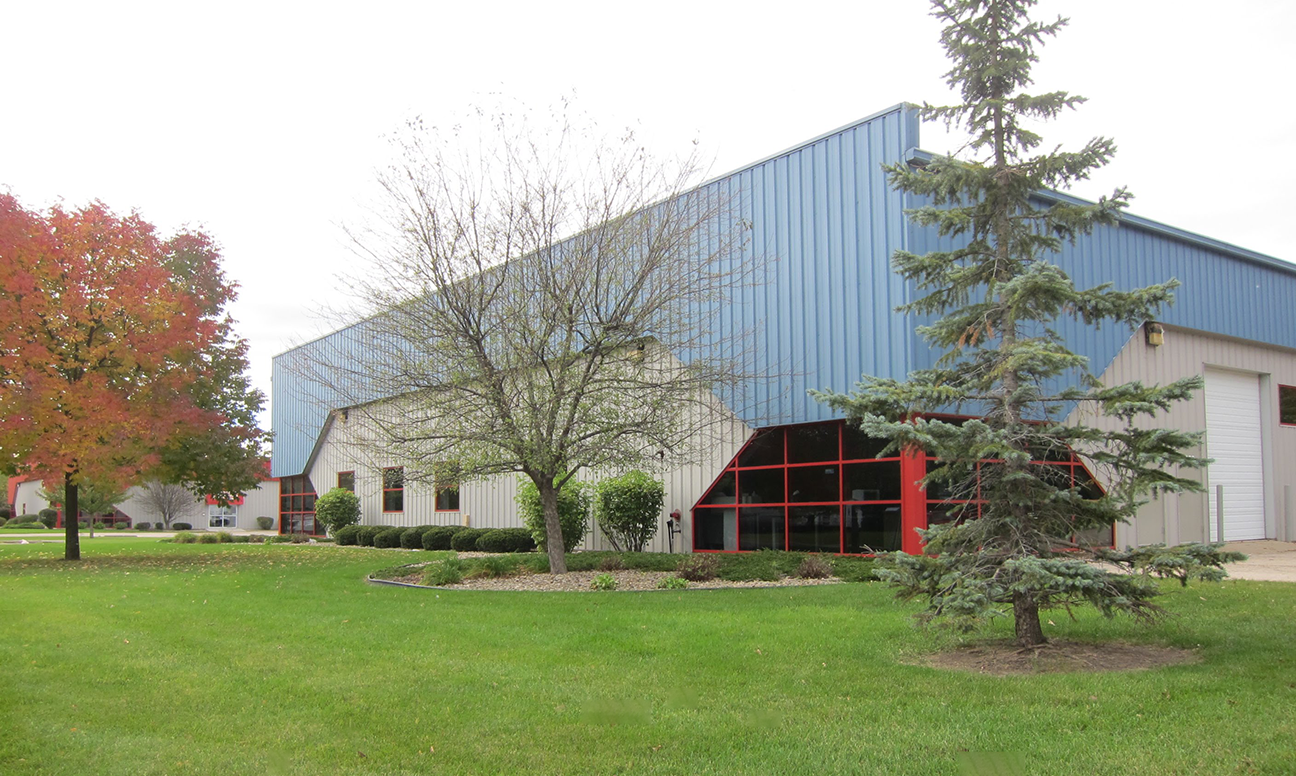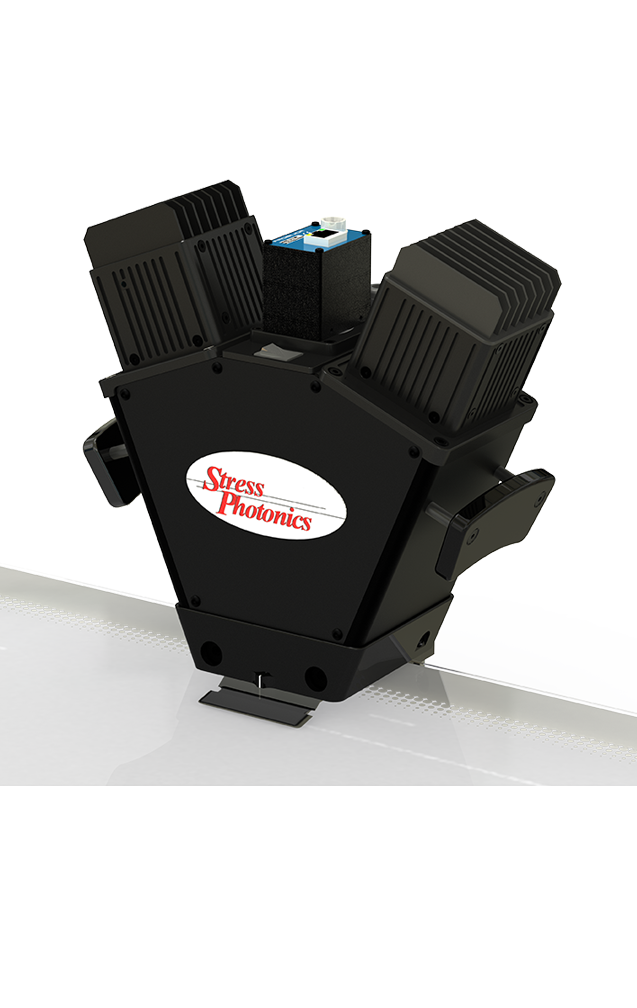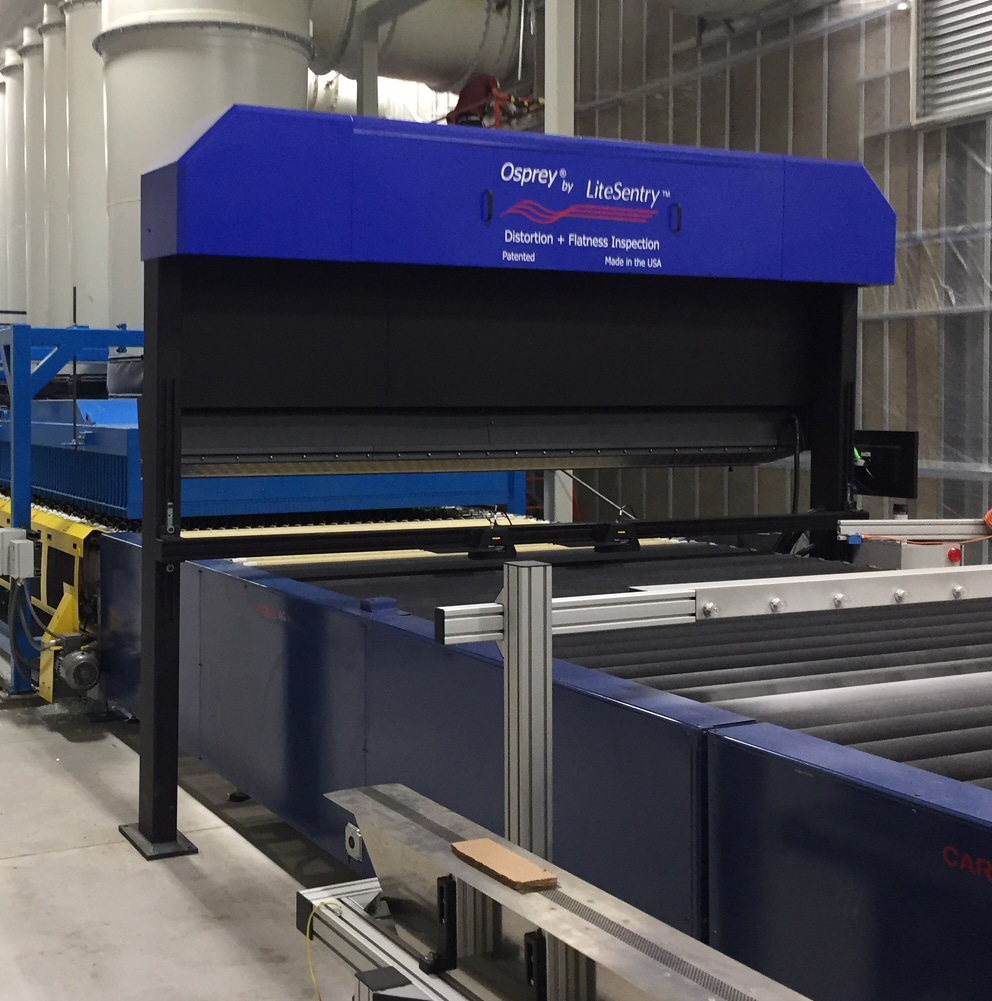+1 (608) 224-1230
About Stress Photonics
Stress Photonics has Called Madison, Wisconsin Home Since its Founding in 1988

Stress Photonics in Madison, WI
Stress Photonics Inc. is a world class leader in engineering measurements of stress and strain. We offer a line of full-field photoelastic and thermoelastic stress and strain measurement systems. Our laboratory systems and our real-time inspection systems have been proven successful in a wide range of applications.
The Grey-field Polariscope (GFP) Photoelastic Stress Analysis (PSA) System has been used commercially to measure assembly stresses, perform residual stress analysis, detect flaws in advanced materials, and validate finite element models (FEM and FEA). Real-time versions of the GFP are used in online inspection at glass manufacturing plants. A video below shows the GFP system at NASA inspecting the space shuttle windshields; however, online production systems are our most common real-time application.
The DeltaTherm Thermoelastic Stress Analysis (TSA) System has also found wide application. Damage evolution and the assessment of structural integrity for both engineering materials and components is the most frequent use. Like the GFP, the DeltaTherm can be used on a wide range of materials. Click the link below to view some of the most popular applications of our stress analysis systems.

In Partnership with NASASpace Shuttle Windshield Inspection
In this video watch as one of our GFP systems is being installed on space shuttle at NASA in preparation to inspect the space shuttle windshields.View all applications!
Jon Lesniak, co-founder of Stress Photonics, is the President, CEO and Board Director.

Jon R. Lesniak, Co-founder,President, CEO, Board Director
Jon received his Master’s Degree from University of Wisconsin in 1991. At the University of Wisconsin, Jon was awarded the Kurt F. Wendt Memorial Scholarship for outstanding performance as an engineering student. At Stress Photonics, he has been the lead product developer with twelve (12) patents to his credit in the areas of thermal and optical methods. He has been principal investigator for many commercial and government contracts. The Stress Photonics products lines were the result of his innovation and leadership in two hallmark contracts: DeltaTherm Stress Measurement System (NASA 1991-94, US Air Force 1993-1997 ) and the Grey-Field Polariscope Strain Measurement System (NASA 1997-99).Jon has also completed contracts with the US Federal Highway Administration to develop thermal methods for the inspection of bridges and continues as a consultant to NASA. Jon has presented many papers in areas of photoelasticity, thermoelasticity, and thermal methods.
Jon was given the Adronicos G. Kantsios Award for a paper presented at SPIE Thermosense XIX, April 1997. In 2005, in recognition of his outstanding work in the field of photoelasticity, Jon received the Felix Zandman award from the Society of Experimental Mechanics.

In Partnership with NASASpace Shuttle Windshield Inspection
In this video watch one of our GFP systems in action inspecting a space shuttle windshield at NASA's Kennedy Space Center.View all applications!
Brad Boyce, key in the success of Stress Photonics, joined the company in 1990.

Bradley R. BoyceBoard Director
Brad attended the University of Wisconsin and completed a master’s in Engineering Mechanics in 1978. His studies were concentrated on fatigue life prediction, experimental mechanics, and engineering instrumentation. After graduation he joined John Deere Horicon Works in Horicon, Wisconsin as a Test Engineer. His responsibilities there included the installation and implementation of new technologies to aid in product design and development. In the mid-1980’s he developed instrumentation and software for Thermoelastic Stress Analysis (TSA) that was later to become one of the building blocks of Stress Photonics. Brad joined Stress Photonics in 1990 and from day one has been key in the success of the company. His primary responsibilities include many of the system and software aspects of the products.
Brad has been active in the Society for Experimental Mechanics since 1973. He has served as local section chairman, chairman of the Thermal Methods Division, twice as a conference chairman, and as a member of the board of directors of SEM. In 2000 SEM recognized Brad with the Brewer Award for outstanding practicing engineer. Over his engineering career Brad has authored and co-authored a broad range of technical papers on topics in engineering measurement and instrumentation. (Go to the Publications page to read a sampling of Brad’s many technical papers.)

Quality Control in the Glass IndustryGFP Stress Analysis System in Action
In this video watch a GFP system in action—attached to a robot—in a quality control application.View all applications!
proud Partners with LiteSentry™

Osprey 9 Completeby LiteSentry™in Partnership withStress Photonics Inc.
The Osprey 9 Complete by LiteSentry™ was developed in partnership with Stress Photonics Inc., the global leader in optical stress measurement. The system is designed for installation on any brand of tempering line creating a paradigm shift in tempering.
Anisotropy — often seen as reflected iridescence — is a problem of growing interest to architects, developers, and building owners. It is a natural result of the tempering process when unbalanced residual temper stress selectively reflects polarized light. Iridescence is frequently visible when glass reflects the polarized light of blue skies or water. In these situations, light that would naturally pass through the glass rotates, causing shimmering patterns where glass stress is high and reflected, and dark patterns where stress is low.
LiteSentry, in partnership with Stress Photonics, offers Anisotropy Inspection integrated with the industry leading Osprey Distortion + Flatness Inspection system. With two state-of-the-art inspection systems housed in a single unit, the Osprey 9 Complete provides 100% inspection, offering visualization and quantification of the most challenging problems in glass fabrication.
Learn more at the LiteSentry™ Website.

Osprey® 9 Complete
by LiteSentry™ in Partnership with
Stress Photonics Inc.
The Osprey® 9 Complete utilizes Stress Photonics' GFP instrumentation and provides 100% inspection, offering visualization and quantification of the most challenging problems in glass fabrication. Learn more at LiteSentry.com.

Stress Photonics products and expertise in Photoelastic and Thermoelastic methods are applicable to full-field stress and strain measurement, and glass inspection.
About
- History
- Leadership
- Markets
- Awards
Products
- DeltaTherm
- Grey Field Polariscope
- Glass Inspection
Applications
- Component Testing
- Glass Inspection
- Residual Stress in Transparent Materials
- Micro-mechanics
- FEA Validation
Getting Started
- Tutorials
- Resources